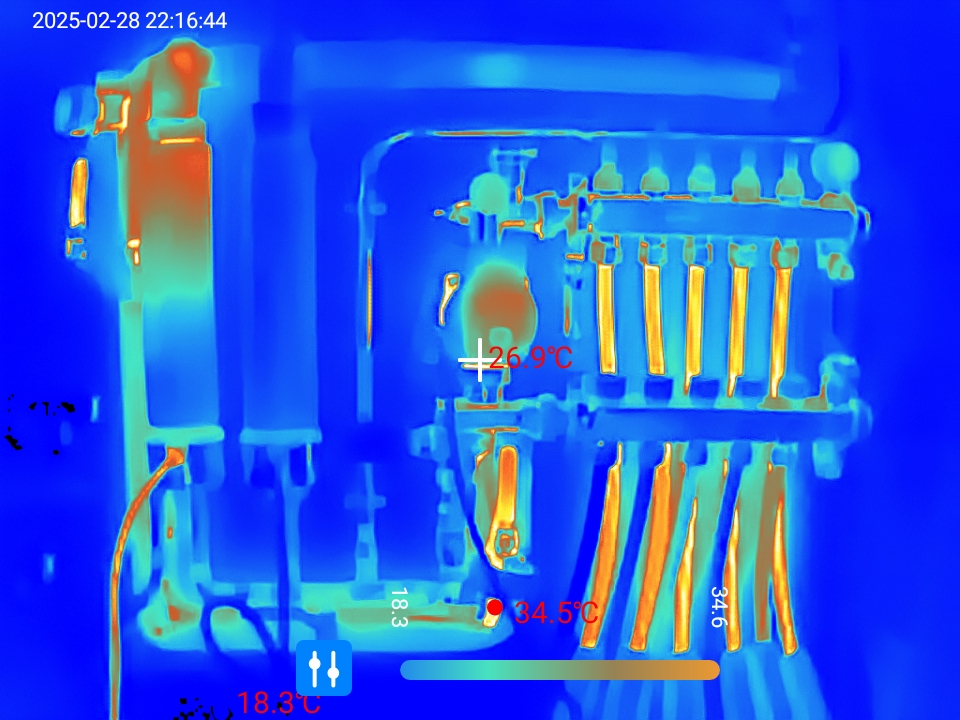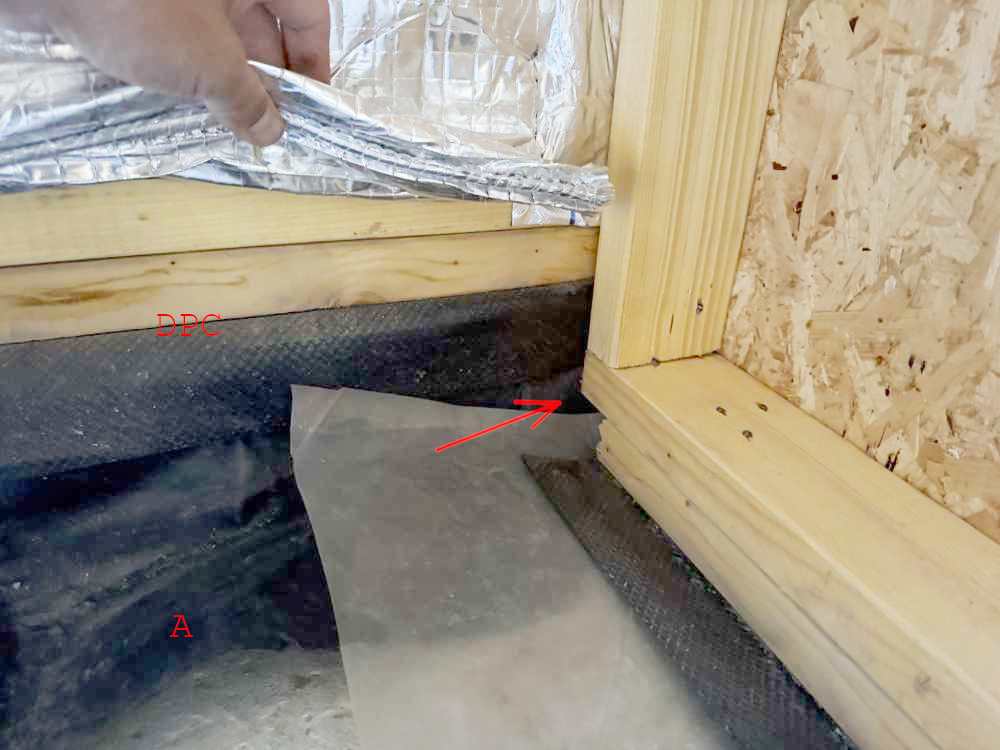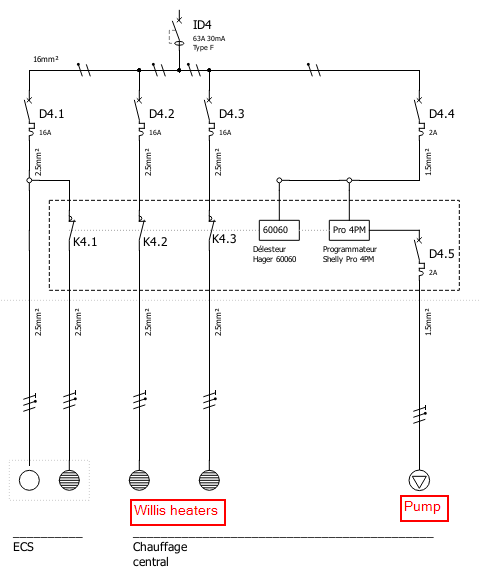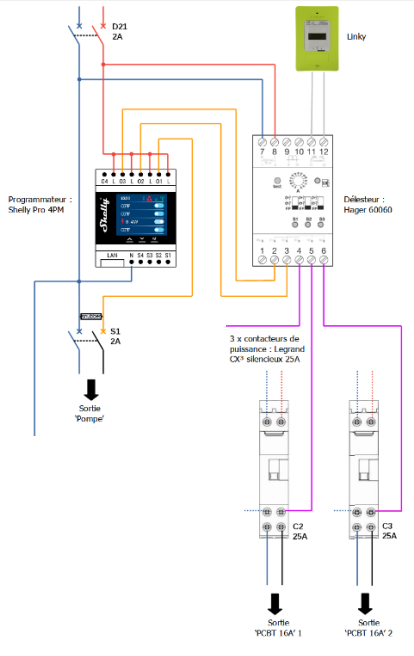
Mike
Members-
Posts
1411 -
Joined
-
Last visited
-
Days Won
8
Everything posted by Mike
-
Moisture between plasterboard and Vapour barrier above ceiling
Mike replied to JohnnyB's topic in General Construction Issues
Maybe that's the time to turn it on then - keep the vents in the areas you're not living in well bunged up and go for an initial approximate balancing to suit the areas you are living in. -
Does aerobarrier negate need for airtightness detailing?
Mike replied to SBMS's topic in Ventilation
it's realistic enough to have spent several hours successfully doing it myself. Even a tiny hole in a high wind feels like someone's blowing cold are down a straw at your hand - no candle required :) -
Does aerobarrier negate need for airtightness detailing?
Mike replied to SBMS's topic in Ventilation
It can identify where the main air leaks are so that you can fix them. I'd rather do that than rely on Aerobarrier at that stage. High winds make for a good pre-pre-test (or post-test) too; go around all the junctions slowly & feel for air leaks & mark them or fix them on the spot. -
Moisture between plasterboard and Vapour barrier above ceiling
Mike replied to JohnnyB's topic in General Construction Issues
Yes, I've seen that happen and adding insulation will resolve it. Be very cautious about running the MVHR - as @JohnMo says, you don't want to be drawing dust into the system. However it is possible to have it running when there's no work going on if you take some precautions & accept the risk, as I have. While work is in progress and until dust settles, keep it switched off; during work put plastic shower caps over the terminals; add sock filters to the extracts (a good idea anyway). Also consider upgrading the MVHR return air filter to better protect the heat exchanger - from (normally) ISO 16890 Course (old G4) - to ISO 16890 ePM1 (old F7 & as normally used on the air intake), which filters out at least 50% of very fine dust and 85% of medium-sized dust (up to 55% of sawdust, for example, is too fine to be trapped by a course filter). I've not done this myself as I suspect that these smaller sizes (<10 microns) would be fine enough pass through the heat exchanger without building up significantly, but I've not looked for any research on the topic. -
It's a good point. From memory, the surface tension of water droplets requires a hole >6mm diameter for the drop to enter. Foam pipes will join together closer than that, so the risk of individual drops entering the joint is low, so long as they can run down the duct and not accumulate, so I'd say that the risk was low. Low enough for me not to worry about anyway
-
Taping isn't normally essential (unless part of any Radon protection), however you have a special case because - from the architects drawing - the DPM level is at external ground level and there is therefore a much greater possibility that damp (or even water) could pass through from outside into contact with the DPC. I'd therefore want it well taped to be certain that it remains dry. 150mm horizontal overlap is fine, but it doesn't look like you have 100mm vertical overlap though; you'd need to increase that with a bigger piece of DPC to meet the Regs. BTW, were the internal wall sole plates preservative treated by the frame manufacturer? I'd have wanted them to be (and TRADA recommends it), so if they're not I would attempt to apply some now, maybe using the DPC as a temporary tray to allow some to be poured & soaked up. Due to the internal wall sole plates being located (eventually) in an trough insulated at the sides, separated from the uninsulated concrete by only the DPC / DPM, I'd expect a somewhat elevated risk of condensation. I'd prefer it if the polythene was above the DPM, as the DPM will better resist any damage if it gets pressed against a sharp edge in the concrete - unless you have a mortar bed underneath that's preventing that? If the polythene were to be punctured there's a risk that the distance from puncture to the edge of the overlap would be less than 100mm (due to the 50mm DPM projection), so another reason to at least tape the joints. But, with all of this, it's your BCO who has the final word.
-
Sheltered under the eaves / gable & with no brickwork above, so no dripping water even if it the inner face gets wet.
-
I suspect that they will, but you'll have to ask. While it may be a garage, few garages these days seem to get used for parking cars - and whatever it gets used for instead may be disrupted / damaged if rain does start dripping in.
-
It is, and it is a strange arrangement , but the percentage does get reviewed from time-to-time - currently inflated to contribute to the refurb of Buckingham House - projected total £132.1m for 2025-26, it seems. Here in France this year's budget for the Presidency is €125.66m, and for that we only get one person royaling / presidenting. You might not save a lot by returning to a republic :)
-
The Crown Estate is not the private property of the King. Our assets are hereditary possessions of the Sovereign held ‘in right of the Crown’. This means they belong to the Sovereign for the duration of their reign, but cannot be sold by them, nor do revenues from the assets belong to them. The UK government does not own The Crown Estate either. Established by an Act of Parliament in 1961, subsequently amended by The Crown Estate Act 2025, we are an independent, commercial business, managed by a Board (also known as The Crown Estate Commissioners). ...we continue to give all of our net profit to HM Treasury for the benefit of the nation's finances. https://www.thecrownestate.co.uk/about-us/faqs
-
Masons mitre or butt joint for solid wood joint
Mike replied to paro's topic in Kitchen Units & Worktops
I'm not aware of a better way. If you use adhesive and clamp it up with the bolts it should be resistant to movement and there really shouldn't be a build-up of muck. -
Exposure extent, rain quantity, rain duration, wind speed, brick permeability, quality of the mortar joints, low height of the wall...
-
Some of the work of a company I worked for was fixing NHBC insurance claims. One of them was retrofitting cavity trays that had been omitted by the original builder; stage 1 of that was cutting out bricks to verify the cause and identify the extent of the problem, so I've seen myself just how much can get through - a lot. Never omit cavity trays.
-
Very likely, unless the brickwork is rendered. In an exposed elevation it can run down the inside of the external leaf pretty freely, especially if the joints aren't well filled.
-
Yes, from memory I think my Elemex model has a 7" stat too, so temperatures in the top half will have no impact. It will switch off either if the temperature builds up lower down (the hot water isn't being pumped away quickly enough), or when the incoming water reaches the stat temperature.
-
Decent "middle of the road" brand for plugin tools?
Mike replied to YodhrinForge's topic in Tools & Equipment
Makita SP6000 Dewalt D2513 as a good compromise between power and weight You may want to go up the range, but I've got the small Festool CTL SYS + DIY dust separator -
I have a mixing valve too, but only to prevent high temperature water entering the underfloor pipes in case someone mistakenly sets the Willis thermostat too high. It's therefore set to 50°C, not the target flow temperature. But it will still mix the water temperature down a few °C as mentioned by @JohnMo. IR image below. With the Willis thermostat set to about 30°C the water coming out of the Willis at 45°C-ish and entering the floor is about 35°C. Other temperatures are misleading as some of the pipes are insulated.
-
Thanks for the added info; I've lightened your photo which helps too see what's going on too. So part of the problem is pushing the clear polythene, or maybe the black plastic marked 'A' (or maybe you've tried both) both through the gap where I've added the arrow? Bearing in mind that the minimum overlap is 100mm, you don't need to get a large piece of DPM through that gap - an offcut of 300 x 200 - ideally a little more - would be enough, if it overlaps the DPCs by 100mm. If the partition is too tight to the external wall, then I'd carefully (without damaging the existing DPCs) take a few mm off the timber using a multitool with a long blade. You could double up the vertical timber if there is any question over the somewhat reduced strength. Having said that, if the timbers on that that internal partition are 100mm wide, it looks like the DPC beneath doesn't project enough to provide the minimum 100mm overlap? If that's the case then you will need to get a new wider DPC underneath its full length. On the external wall, I'd have preferred the DPC to have been turned up but, if it's turned down and still overlaps the DPC & other DPMs by 100mm then I'd find that acceptable, but you'd need to verify that your BCO & any 3rd party certifying insurer that may be involved takes the same view.
-
For the second winter in a row, my Wilis UFCH is operating manually, but by next winter it will be more sophisticated. A Shelly Pro 4PM will be capable of scheduling the days and times to switch on and off & providing remote control. Upstream of the Shelly there will eventually be a Raspberry Pi which will calculate the heat required, monitor temperatures and command the Shelly (which will become a fall-back in case the Pi is out of action). Either way, the Shelly will send control signals to a pair of 25A contactors (one for each* Willis heater) and will directly control the pump (since that draws little current). A Hager 60060 load-shedder will temporarily cut the contactor control signals if the mains supply is under heavy load, but in your case, @Antonb182, that would be the place to put a thermostat. However, note that with UFCH isn't as reactive as radiators - there's a significant time lag between heating the floor and the air reaching the set temperature that you'd need to take into account to avoid overheating. Schema + sketch below. All the this (excluding the Pi) will take up one row of my consumer unit. D4.4 & D4.5 in the schema = D21 & S1 in the sketch; not got round to updating that... *Although I could heat my place with 1 Willis heater, I've chosen to install 2. That's partly to have the option to use both to load the floor with heat during off-peak hours, but mainly so that I can switch to the second if the first should fail.
-
I'm not clear on exactly what you mean - or rather that at a junction of an internal wall and external wall I can't envisage a problem, which probably means I've not understood you question. However any DPM / DPC is likely to be too thick to fold into hospital corners. There are pre-formed DPC corners on the market, for a price, that may help. But the fundamental rules are that all DPM and DPC junctions must overlap by at least 100mm and be to the satisfaction of your BCO.
-
I agree that it looks like water splashing, mostly below DPC level so nothing to worry about. No harm adding drainage channels - it should reduce the splashing. They're just common bricks, intended to remain invisible below the ground level. The mortar was almost certainly never there in the first place, though if a tidier brickie had done it then it would be.
-
Maybe cladding + additional genuine Compriband between the cladding and the window?
-
That's an interesting question. Just went hunting and came up with this chart, showing public approval & disapproval of Government between 1957 & 1991. The only periods when more people approved of the Government than disapproved, were 1957 to 1962 (Harold Macmillan, Conservative, Keynesian economics, prosperity, "You’ve never had it so good" - until the Profumo scandal), and 1964 to 1966 (Harold Wilson, Labour, low unemployment, economic prosperity, major social reforms, "white heat of technology" - until defeated at the polls). Source: Social and Political Change in Britain (1945-1991) | ROPER CENTER






